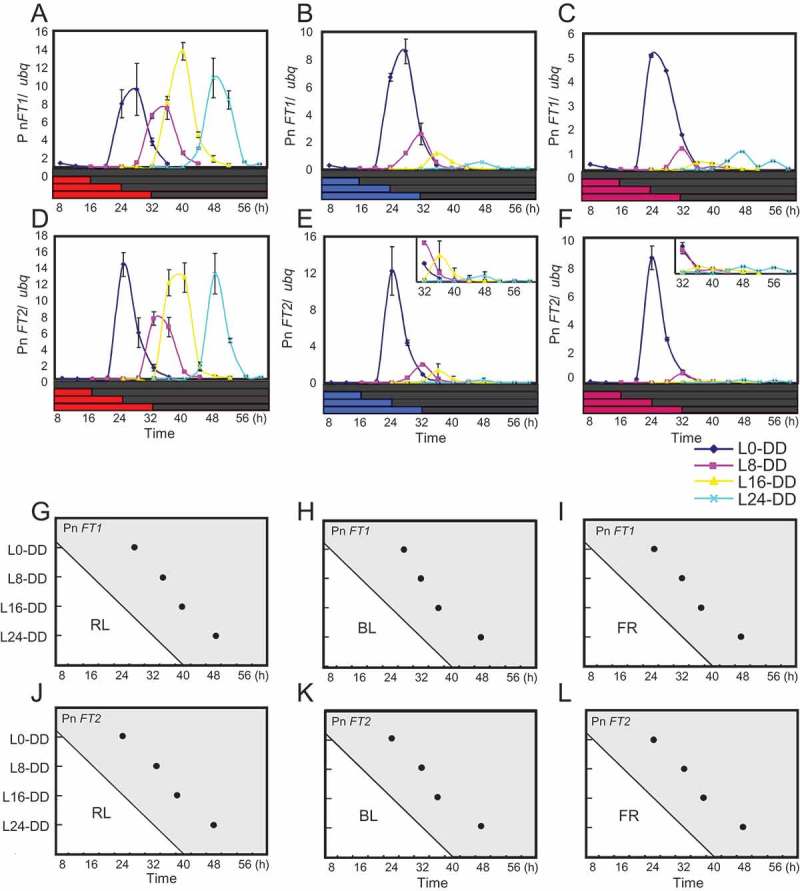Figure 2.

Red, blue and far-red lights function as determinants to reset the clock at lights-off. Plants were grown under 8 h light + 16 h darkness for four days. On the fifth day plants kept in 8 h WL in the morning were further exposed to either red, blue or far-red light of various durations (0, 8, 16, 24 h), and thereafter transferred to DD. Plants were harvested every 4 hours within the period of only 28 hours from transfer to DD. (A-F) Circadian expression of Pn FT1 and Pn FT2 in DD after transfer from red light (A and D), blue light (B and E), or far-red light (C and F). Transcript levels of Pn FT1, Pn FT2, and ubq was analyzed in DD by real-time PCR. The horizontal axes represent hours from dawn on the 5th day. The vertical axes indicate transcript levels of Pn FTs relative to ubq based on obtained data from real-time PCR. Error bars show SD among two biological replicates. (G-L) Diagrams illustrating peak phases in circadian expression of Pn FT1 and Pn FT2 in DD. Peak times in expression of these genes relative to dawn were plotted. The horizontal axes represent time after dawn from the fifth days. The vertical axes represent the duration (h) of red, blue or far-red light that each population received before transfer to darkness (e.g., L8-DD spent 8 h in either one of these lights before transfer to darkness).
